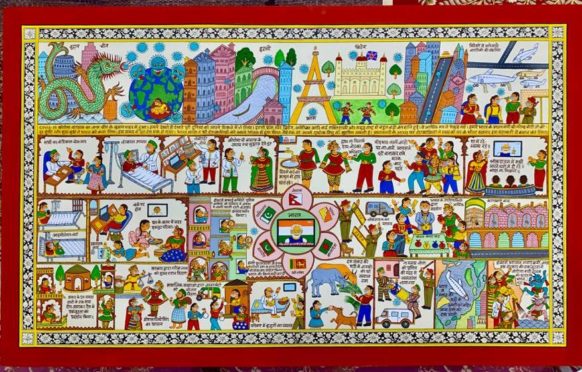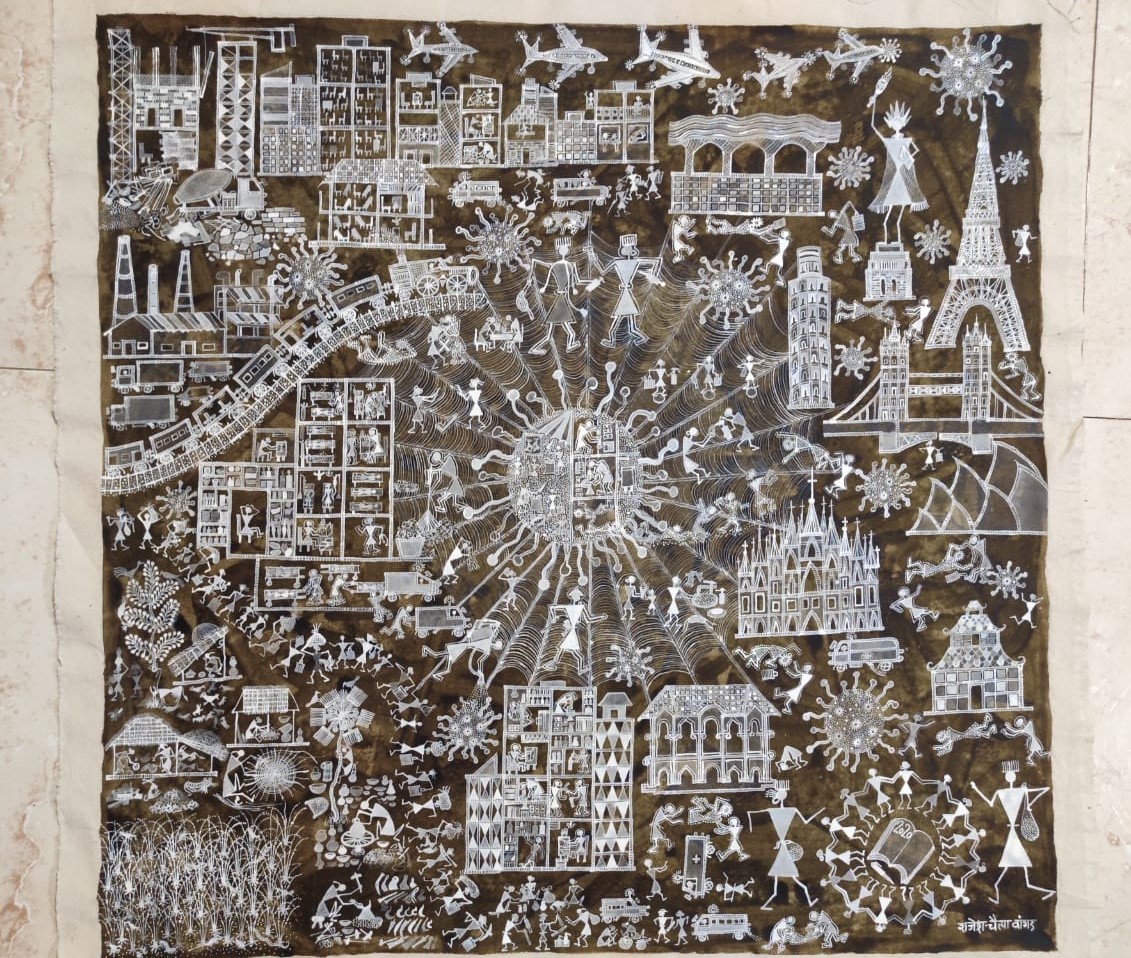
Five new pieces of Indian artwork, themed around the pandemic, are to go on display in Glasgow.
Glasgow Museums has acquired the pieces as part of work to collect material to record and represent the extraordinary period in history we are living through.
Unique to Scotland, the collection is a combination of works on cloth and on paper, each showcasing a distinct style of traditional folk and tribal craft from a different region of India.
Duncan Dornan, Head of Glasgow Museums, said: “We’re delighted to acquire these timely, intricate and engaging works, with the support of the National Fund for Acquisitions.
“Every aspect of life has been touched by Covid-19. Contemporary collecting around the pandemic will help us comprehend the experience and allow future generations to learn a little about what exactly life was like living with it.
“This involves looking beyond Glasgow at the global response. These five paintings are personal and honest yet speak to and for so many. Discussing issues we are now so familiar with, the work seems particularly appropriate at this time of a second national lockdown.”
The pieces will add to the city’s World Cultures collection, which features South Asian and folk art collections.
Dornan added: “The poignancy of these works, illustrating the effects of the virus across India are also likely to touch the lives of the diaspora South Asian communities in Glasgow. This capsule collection is a welcome and thought-provoking addition to Glasgow Museums’ collection now and for future generations.”
In India, rural folk art has traditionally been used as a means of spreading awareness within communities.
Every region has its own distinct style of colour combinations, layout, figures and decorative motifs, passed down from generation to generation for thousands of years.
Together with other objects, these artworks will provide an internationally important visual record and insight from a particular cultural perspective, during an unprecedented global crisis.
The artists included are at the forefront of their individual traditions, and each has exhibited their works internationally and been recognised with national art awards.
Rajesh Chaitya Vangad is behind one of the pieces, measuring almost one metre sq and made with a bamboo nib on specially prepared cloth.
One of India’s best-known folk and tribal artists, he is renowned for his incredibly detailed Warli paintings and has created immensely vibrant murals at Mumbai International Airport and the Craft Museum, New Delhi.
He said: “I was listening to the news and thought I must depict this in the Warli style, it is such a significant moment in world history and I have to record it for posterity. Now my focus has shifted from the spread of the virus to the effects of the lockdown.
“I am now showing what is happening to people because of the lockdown. Students are sitting at home, companies have shut down and so many people are out of jobs. I am very pleased my Covid story and its message will reach people all over the world.”
Post Covid Glasgow Museums intends to showcase the works as part of existing displays on South Asian art, in temporary exhibitions in the Fragile Art and Cultural Connections galleries in Kelvingrove Art Gallery and Museum and in proposed future displays reflecting on the Covid-19 pandemic.

Enjoy the convenience of having The Sunday Post delivered as a digital ePaper straight to your smartphone, tablet or computer.
Subscribe for only £5.49 a month and enjoy all the benefits of the printed paper as a digital replica.
Subscribe © Glasgow Museums
© Glasgow Museums © Glasgow Museums
© Glasgow Museums